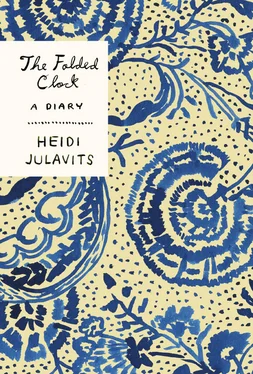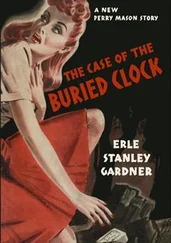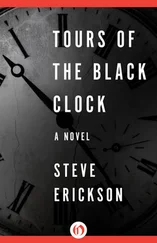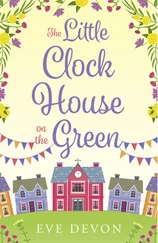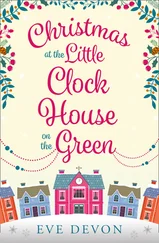The Japanese woman, I assumed, wanted me to take her picture in front of a statue. I checked the direction of the sun. I considered telling her to pose in front of a smaller library, because I had taken a lot of successful pictures of tourists there.
Instead the woman asked me, “Do you imagine God as a woman?”
I took her question seriously. I didn’t want to be dismissive or rude and thus reflect badly on my city or my country. I always feel a keen responsibility to be a good host. Her question better explained, too, why she was on campus. Maybe she thought she’d strike up a more interesting conversation with a stranger she found at a university rather than one she found in, say, Carnegie Deli. What is the place of man in the universe? What determines the fate of the individual? Where, spiritually speaking, is the nearest subway?
I also considered the possibility that she was part of a conceptual art piece, maybe an “interpreter” hired by the artist Tino Sehgal. Sehgal did a piece recently at the Guggenheim called This Progress in which interpreters — one of them was my friend’s teen son — asked museum visitors questions like “What is progress?” and followed them up the museum’s spiral ramp until another interpreter took over. Maybe Sehgal’s new work was being secretly unfurled over campuses of higher learning. Maybe, in fact, this woman was not an interpreter herself but part of the conceptual art advance team. Maybe I was being interviewed for an interpreter position.
Now a job was on the line. I love to get jobs. Getting jobs is like winning domestic arguments on a grand scale, and then getting paid for it.
So. Did I imagine God as a woman? I didn’t. When urged to envision God, or the aura God exudes, I understood that aura as male, maybe because the only people who use the word “God” in a question such as the one I was asked by the Japanese woman tend to be Christian. But I didn’t want to give the Japanese woman this hackneyed answer. I would never be hired.
Instead I said, “I’m not sure.”
“According to Scripture,” the Japanese woman said, “God is referred to as both Our Father and Our Mother.”
“Oh,” I said. Now I was wondering: maybe she was a feminist activist?
The Japanese woman could see I was confused. I was clearly a novice. I was not the erudite liberal arts student/professor she’d hoped to encounter.
She regarded me with sympathy.
“Do you believe in God?” she asked.
I heard this question as “Do you even know who God is ?”
I was in too deep. I didn’t have answers to her questions. I had too much e-mail to answer to answer her questions. I was no interpreter. I already had a job.
“I’m sorry,” I said. “I don’t think I’m going to be able to answer your questions today.”
Today I biked to a vintage store. I bought
· a deco rhinestone lipstick case, mirror broken, “as is” price of five dollars
· a red tin of cookie and sandwich cutters for twelve dollars
· a painted French serving tray for too much money (or maybe not; the owner of the store made me feel better about the price by saying of the tray, “it’s probably much older than I think”)
I also bought a garnet and rhinestone necklace. It’s costume, from the ’40s, not valuable, and it matches nothing I own, but what swayed me was the weight of it. I brought it home. I preferred looking at it to wearing it. I kept it spread over the top of my dresser as interior decoration. Then I considered giving it to my mother for her birthday. She was about to turn seventy. My husband and I were throwing her a fancy dinner, and turning our house into a three-star restaurant run by children. But was this enough? I worried that I needed to give her an object to commemorate her birthday. A dinner party was too ephemeral a gift. She wouldn’t catch accidental sight of it and remember…Me? That she’d turned seventy? Neither of these are things she’s likely to forget.
Still, the tradition with landmark birthdays is to give a gift that presumes the receiver needs reminding that they remain beloved and alive. I thought I’d give my mother this necklace. But while I never wore it, I found, for whatever reason, that I didn’t want to give it away. I told myself, You didn’t buy it for her, and it’s not a true present if you didn’t buy it with the person in mind . This gift was technically a regift, from me to myself, and from myself to my mother.
I concluded: I definitely should not give her the necklace. And yet I still couldn’t firmly commit. I changed my mind daily. I thought, She’s turning seventy — does she really want an old necklace? Wouldn’t she prefer something more fun and modern? If I give her this necklace, won’t I offend her by implying that she’s no longer young enough to wear fun and modern jewelry? I thought, I’m a vintage-wearing person, but she is not a vintage-wearing person. Maybe the objects of dead people freak her out . I thought, If I like it, she probably won’t like it, because we don’t have the exact same taste in jewelry. I have given her jewelry in the past that I’ve never seen her wear (and that I would wear), and she’s given me jewelry in the past that she would wear (but that I never would). By this logic, I should not give her the necklace. Except that I didn’t ever wear the necklace. This suggested that she would like it and thus I should give her the necklace .
I did not give her the necklace.
The night of her birthday dinner, I dressed up. Because I was still uncertain about my decision to keep the necklace, I wore it. I thought to myself, If she doesn’t comment on my necklace, it means she doesn’t like it, and I made the right choice . But I often compliment people on items of clothing they’re wearing because those items look great on them, not because I think they would look great on me. I compliment a woman on her ring when I can sense that she is proud of or excited to be wearing it. I want her to know that her positive feelings about herself are effectively communicated to me through the object transmitter she’s put on her body.
If my mother complimented me on my necklace, it could mean that she herself desired to wear it, or it could mean that she appreciated how I wore it. If she said nothing, of course, this would mean unequivocally — she did not like it, not on me, not on her.
We met for cocktails on the front porch as the child staff readied our table. My mother said, almost immediately, “What a pretty necklace!” I tried to divine how she meant this comment. It was pretty on me? It might have been pretty on her? I demurred. “It’s just some cheap thing I found at a vintage store.” It was cheap. But I was trying to make it sound less desirable to her, and also to reassure myself — I hadn’t been cheap when I’d failed to give it to her.
Today I realized it was July 19. This hasn’t been the case in pretty much forever. For years I’ve gone days without knowing the date. I exist in relation to dates I’ve missed. Suddenly I am forty. Suddenly I was forty a long time ago.
The same is true with minutes. The first occasion I had to notice minutes was when I worked briefly as a hostess in a restaurant. The owner was Lebanese; he spoke French and rode a motorcycle and told me that my outfits weren’t sexy enough for me to capably say, “Your table is ready.” I hated working there for many reasons, but mostly I hated my time responsibilities — I could never lose myself in the work; I could never look at my watch and be amazed that three hours had passed. Quickly passing time stressed me out, because if time passed too quickly then people wouldn’t have time to order dessert and time to pay their checks, and come time there would be no tables for the 8:45 reservations. I obsessively monitored the clock leading up to each seating—7:25, 7:26, 7:27, 7:29, 7:30. I never didn’t know what time it was, not for one single minute did I not know. This made the shift crawl by. One night lasted a week. I quit after two days. A few years later I heard that the owner was killed on his motorcycle.
Читать дальше
